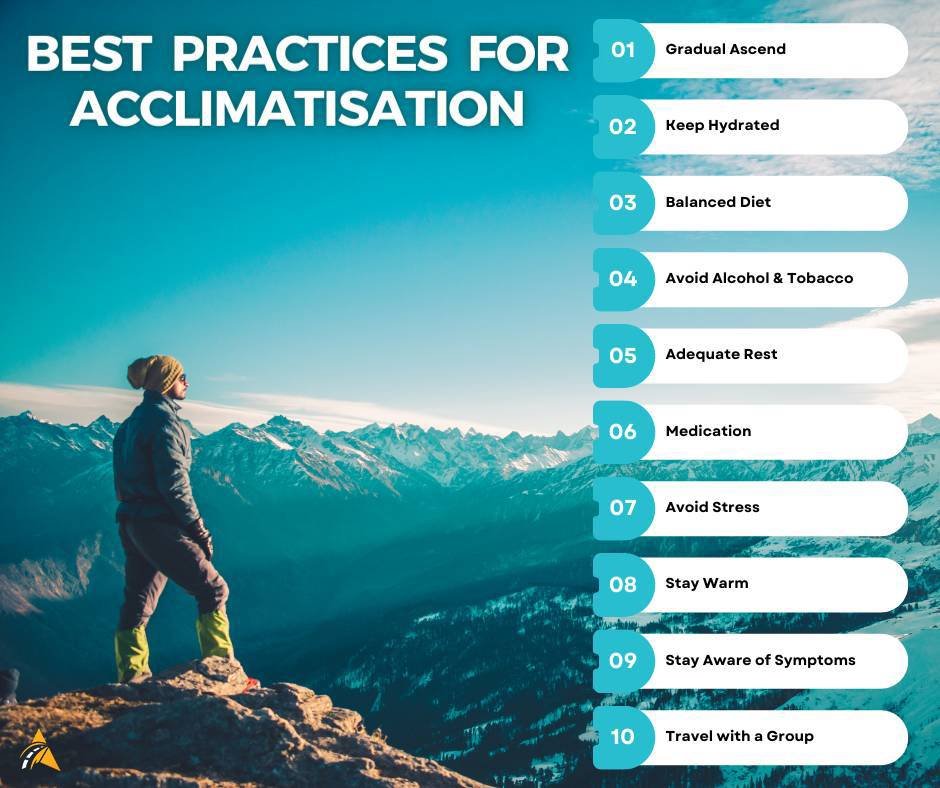
Ladakh is a region in India that is surrounded by the towering mountains of Himalayas and has a rich cultural history. Its high peaks and other unique features make it both interesting and difficult to visit. When hikers and explorers go to this beautiful area, they are often met with the effects of high altitude sickness, a physical condition that can cast a shadow over their experience.
High altitude sickness, also called acute mountain sickness (AMS), is common in Ladakh because it is between 9,800 feet (3,000 metres) and well over 17,000 feet (5,182 metres) above sea level. Humans are used to living at lower levels, where the air is more thick and has more oxygen. As you move up to higher levels, the air gets thinner and has less oxygen in it. This decrease in oxygen availability can lead to a series of physiological adjustments that some individuals may find challenging to adapt to. Hence leading to High Altitude sickness.
In this guide, we’ll talk about what causes high altitude sickness in Ladakh, what its signs are, and how it might be prevented. By learning about the details of this situation, travellers can be better prepared to enjoy the beauty of Ladakh and reduce the risks that come with its high altitudes.
When you travel to Ladakh there is a sudden shift in air pressure and oxygen levels, leads to altitude sickness. If you go to a high altitude without allowing your body time to acclimatise to reduced oxygen, you can have symptoms. Additionally, the amount of physical activity such as trekking, hiking, and skiing, which requires effort can also cause AMS at higher elevations.
Also, the low air pressure may also cause blood vessels to leak liquids. Your lungs and brain get flooded with fluid because of this leaking. Ignoring moderate or severe symptoms might result in a scenario that is life-threatening.
The symptoms of High Altitude Sickness (HAS ) or Acute Mountain Sickness(AMS) are:
Recognizing these signs and promptly addressing them is crucial to ensuring a safer high-altitude experience.
There are three major forms of AMS as listed below.
To stay safe at high altitudes, you should know what the signs of AMS are and how it gets worse.
SYMPTOMS
TREATMENT
SYMPTOMS
TREATMENT
SYMPTOMS
TREATMENT
Based on the altitude and past case history, we have categorized the AMS regions of Ladakh into 4 zones as listed below.
Altitude less than 7000 feet
Altitude between 7000 – 11000 feet
Altitude above 12000 feet
Altitude sickness may strike anybody. Your risk does not appear to be affected by your age, sex, or overall health. You could be more vulnerable if you:
The following are a few points to remember and take care of while visiting the High Altitude region of Ladakh.

Remember that AMS can happen to anyone, no matter how old they are or how fit they are. When traveling to high-altitude places like Ladakh, it’s important to put your health and safety first. If your AMS symptoms don’t go away or get worse, you should seek medical attention immediately.
Ladakh, with its stunning landscapes and soaring altitudes, is a destination that captivates travelers from around the world. However, the high altitude of this region can pose a challenge for visitors, leading to acute mountain sickness (AMS).
We hope we have helped you understand the causes, symptoms, and preventive measures of high altitude sickness in Ladakh. By being well-informed and prepared, you can make the most of your Ladakh adventure while prioritizing your health and well-being.
Remember to take it slow, stay hydrated, and seek medical attention if necessary. With these tips, you can enjoy the beauty of Ladakh without compromising your health.